Reviews
Stanley Kubrick
UK/USA, 1968
Credits
Review by Adam Balz
Posted on 09 March 2010
Source Warner Bros. DVD
Categories Kubrick
Of the countless scenes in 2001: A Space Odyssey that continue to receive deep critical study - the match-on-action of the bone and the spacecraft, the pod lights flashing into strange constellations on astronaut Dave Bowman’s face, HAL reciting “Daisy” as he is turned off - there is one that has haunted me since my first viewing years ago. As the film draws to its close, we find Bowman, now aged and bedridden, lying in a room. The walls are pristine and blindingly white, lit equally on all sides, and the room is populated by sparse, anachronistic furniture. The year is unknown, as is the location of this room, and the entire scene exudes nothing more than loneliness and isolation—a sanitized home that even Kubrick, with his infamously reclusive personality, must have found cold and unfeeling.
Suddenly, Bowman stirs. He raises a withered, fragile hand and motions to the foot of his bed, where a monolith has appeared—the same large, obsidian block that has come and gone throughout the film, first among a tribe of primates, then again in an excavation on the surface of the moon, and finally floating through space. When the camera cuts back to Dave, the old astronaut has disappeared from his bed; in his place is a fetus—the so-called “Star Child”—which glows a white that overpowers the room around it. The camera pauses on this paradoxically wombless in utero child, then returns once again to the monolith, tracking in on its center. When the black prop reaches beyond both borders of the screen, the white of the room seems to move away from the center, as though both sides are curtains being drawn apart or doors being opened. The screen goes black. The moon and Earth appear, followed by the child—all three floating silently in space. Richard Strauss thunders in as the Star Child turns slowly until, facing us, it fades with the film.
Though 2001: A Space Odyssey is divided into three chapters via intertitles1 the film is actually comprised of four distinct sections. Beginning with the “Dawn of Man” sequence, the film progresses through the discovery of the monolith on the moon, the voyage to Jupiter, in which HAL malfunctions, and the final half-hour, which begins with Dave’s descent through an inexplicable and psychedelic nether-space and concludes with his transformation into the Star Child. And while these sections may seems at best loosely connected in their ideas and props - the monolith, for instance, plays a pivotal role in all four - the fluency between each seems at best awkward and at worst head-scratching. With the exception of Dave, characters never cross from one section into the other: the scientists in the moon scenes, for instance, never reappear once those scenes end, despite their long moments of dialogue and thorough character development. It is as though they have been completely abandoned by the filmmakers, their storyline left hanging uncomfortably without resolution. Yes, HAL mentions the moon mission in the third section, but little on the subject is discussed beyond that one moment, and even then there is no resolution offered by either Dave or the computer.
However, the film’s bizarre structure, which has undoubtedly contributed to its reputation as an indecipherable cinematic puzzle, is a cycle in which seemingly irrelevant moments, images, shapes, and statements reappear, albeit slightly evolved, to create a sense of cinematic déjà vu. The bone used in the film’s first section to commit violence becomes a nuclear satellite circling Earth—one piece of technology becoming another, one weapon becoming another. The large, orb-like craft used to carry Dr. Heywood Floyd to the moon in the second section appears gain in section three, reincarnated as the smaller Discovery One pods.2
In fact, it’s the similarities between the second and third sections - Heywood Floyd’s journey to the moon and Discovery One’s voyage to Jupiter - that are the most striking. When we are first introduced to Heywood Floyd, he is aboard a Pan American spaceship en route to a double-wheel station pirouetting through space. On the station, he delivers his first line while exiting a revolving elevator. In the scenes that follow, he contacts his daughter back home through a pay television, answers inquiring questions from a colleague about the nature of his visit to the moon (“Dr. Floyd, I hope you don’t think I’m being too inquisitive,†the colleague begins), and drinks liquefied vegetables from a straw-studded tray. In the third section of the film, we are introduced to one of the astronauts as he jogs in Discovery One. In the scenes that follow, Frank’s parents deliver a birthday message through one of the many televisions on the ship, Dave Bowman sidesteps HAL’s question about the moon (“Forgive me for being so inquisitive,” HAL begins), and both astronauts eat shapeless food from a tray. These similarities, however, have now become weighed down by pangs of distance and isolation: in the previous section, it takes only a few seconds for Floyd to be connected to his home on Earth, whereas the transmission between Frank’s parents and Earth takes seven minutes. There are no pilots or stewardesses on board the Discovery One, nor any fellow scientists—the only companions Dave and Frank have besides HAL are three doctors kept in suspended hibernation like twenty-first century mummies.
Then what of the first and last sections? Is there a connection between the first, in which evolving primates discover violence and use it to keep control over a puddle of muddy water, and the last, in which a solitary man in a sparse room is reborn as a glowing fetus? Of course there is. They are the first and last portions of Kubrick’s cycle, which pertains to man’s propensity towards violent means. For the primates, violence is a necessity, an evolutionary need for survival; for 21st century humans, it is a luxury shared by the paranoid, the powerful, and the afraid. The threat of war is no longer used to sustain one clan by threatening another—it is used to prolong one nation or idea by threatening all nations and ideas. The nuclear satellite, though clearly out of sight, was never out of mind. 2001: A Space Odyssey was, after all, released in 1968, as both the Cold War and Vietnam War escalated into stalemates over superiority: the United States versus the Soviet Union, a technologically advanced contest featuring rockets and bombs; and the United States versus the Viet Cong, a nearly primitive struggle in the jungles of Southeast Asia featuring guerrilla warfare, improvised weaponry, and a complete abandonment on both sides of modern military tactics.
2001 begins with the precursor to humanity - a tableau of chattering and violent primates, complete with a few young chimps among the costumed actors - and concludes humanity in its most advanced form—a glowing, god-like child overseeing Earth in all of its entirety. Once again, Kubrick’s characters follow the celestial bodies in a progression, just as the director so beautifully photographs them in the film’s title sequence: the moon in the foreground, then the Earth, then the sun in the distance. Humanity progresses from a primal state to a state of technological advancement before arriving at ultimate enlightenment. The primitive apes who feast on carcasses become the advanced men who eat and drink homogenized forms of food until we arrive at the aged and isolated Dave, who eats actual food with a plate and silverware, then drinks from an actual glass, only he does so alone.
All four sections of the film indicate an evolution of human attitudes towards technology in that man comes to depend on them for survival, then exploration, then dominance, until technology is dependable only for its ability to destroy. The monolith - the film’s only constant and, some might argue, its only true main character - represents this. For the first three sections, the monolith is something to be approached with a mixture of fear, curiosity, and awe; it is not understood as anything other than an anomaly signifying something more intelligence than human beings. And yet, for most of the film, the monolith is treated as nothing more than a discovery until the final section, when Dave Bowman reaches out for it from his deathbed. The man’s small action is loaded with emotion—the reach seems desperate, as though a millennium of dammed realizations have suddenly come flooding out. Only then, as Bowman is transformed - elevated - into the Star Child, is the audience allowed to be transported through the monolith rather than around it.
In Arthur C. Clarke’s novel, however, the Star Child was intended to detonate all nuclear devices on and around Earth. The idea that this sudden, born-yet-unborn being would be responsible for the total annihilation of all of humanity leaves readers with a sense of determinism—a notion that the mistakes we have made cannot be unmade, that our own decisions have doomed us to continue to believe our technological rise is not, in fact, humanity’s downfall. But because Kubrick’s version leaves this out, substituting instead the final shot of the Star Child looking out at us from the screen—a pleading, hopeful look from an unborn child, its developing hands seemingly locked in a pose of consideration, maybe even prayer—the film ends on a note of optimism. When the camera tracks in on the monolith, we as viewers are give the opportunity, as it were, to try again—to fix the mistakes of our ancestors and ourselves, to listen as the past speaks to us. We are no longer primates around a dirty puddle, Kubrick says; we cannot be travelers in space, dependent on technology even as we fear it and use it to intimidate and control others. The odyssey of the title is not one that leads us toward ever more advanced technologies, but one that leads us in a new direction, towards a more peaceful existence on Earth itself.
- There are some who argue that the intermission, which is uncharacteristically short, should be taken as part of the film itself, with the black screen nothing more than a lengthy shot of the monolith’s body.↩
- While this may seem like a stretch, it’s important to note that Kubrick, who had enough control over this film to insist that actual, step-by-step instructions be printed for the space lavatory, was too obsessive of a filmmaker not to have noticed the similarities between both. ↩
More Kubrick
-
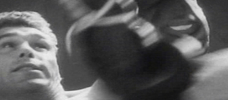
Stanley Kubrick’s Early Documentaries
1951-53 -

Fear and Desire
1953 -
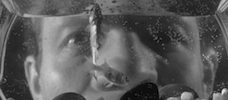
Killer’s Kiss
1955 -
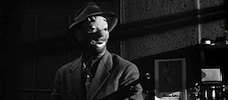
The Killing
1956 -
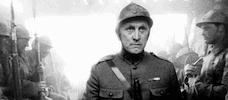
Paths of Glory
1957 -
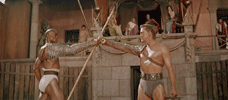
Spartacus
1960 -

Lolita
1962 -
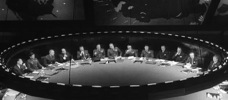
Dr. Strangelove or: How I Learned to Stop Worrying and Love the Bomb
1964 -

2001: A Space Odyssey
1968 -

A Clockwork Orange
1971 -
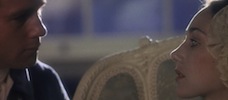
Barry Lyndon
1975 -
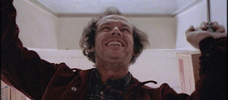
The Shining
1980 -

Full Metal Jacket
1987 -
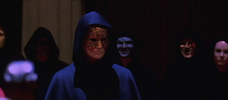
Eyes Wide Shut
1999 -

A.I.
2001
We don’t do comments anymore, but you may contact us here or find us on Twitter or Facebook.



